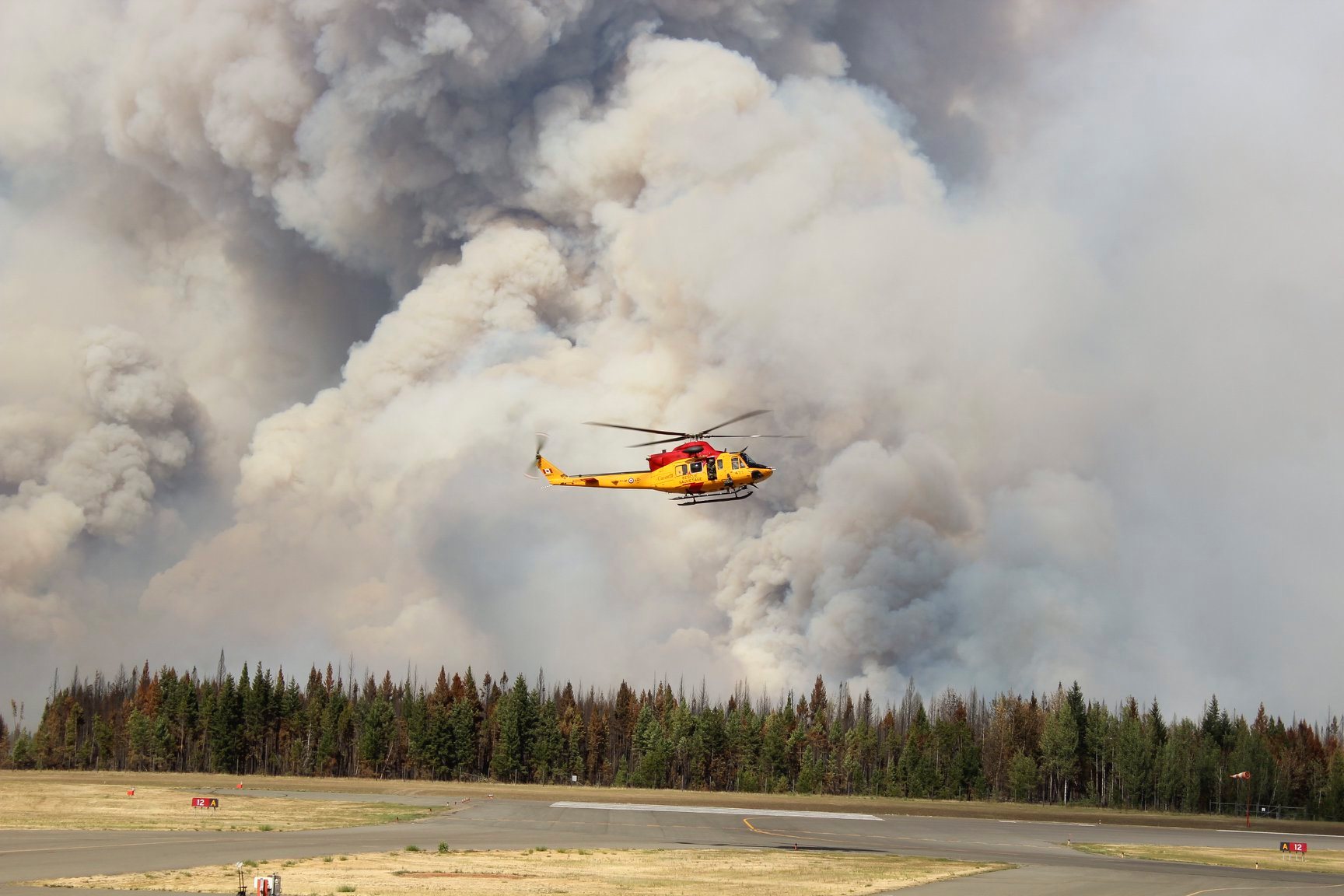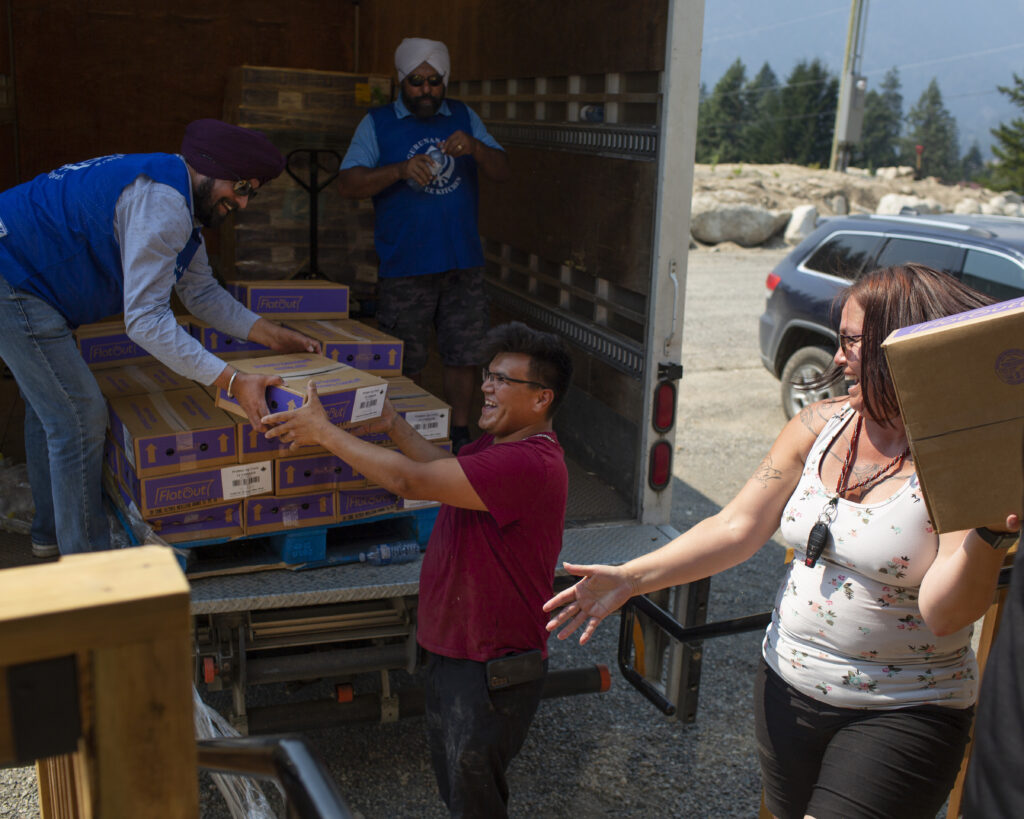
The site of an infamous B.C. mining disaster could get even bigger. This First Nation is going to court — and ‘won’t back down’
Xatśūll First Nation is challenging B.C.’s approval of Mount Polley mine’s tailings dam raising. Indigenous...
More than 10 per cent of Canadians are living in homes that are increasingly threatened by wildfires, with on-reserve First Nations communities being disproportionately affected, according to new research published by scientists from Canada’s natural resources department.
The new study, published in the Canadian Journal of Forest Research, found that roughly 4.1 million people — or 12.3 per cent of the Canadian population — reside within what the authors call a ‘wildland-human interface’ or areas where homes and public structures intermingle with forests.
But the percentage of people at risk in on-reserve First Nations communities is nearly three times higher, with 32.1 per cent of this population facing looming dangers as the climate crisis exacerbates natural disasters. The authors estimate First Nations reserve inhabitants make up only 1.1 per cent of the Canadian population, based on the 2011 census.
The research is coming to light a few months into a devastating forest fire season with more than 2.7 million hectares of land in Canada already affected by wildfires, including a deadly blaze in June that killed two people and destroyed the town of Lytton, B.C. That fire resulted in roughly 300 insurance claims and $78 million in insured damage, according to recent estimates by the Insurance Bureau of Canada.
The threat wildfire poses to communities is expected to increase in the future, since 17.3 per cent of forested areas in Canada are close to housing, industry and infrastructure, according to the new research, published in April.
“Personally, I think I really underestimated the number of people and the amount of area subjected to wildfires in Canada,” Sandy Erni, lead author of the study, told The Narwhal in an interview.
Yan Boulanger, a co-author of the study and a research scientist in forest ecology at Natural Resources Canada, said that the annual number of lands affected by wildfire is only going to increase.
“This is mostly caused by an increase in temperature,” he said. “Because temperatures are increasing, the climate is drier. So conditions are more fire conducive. Also, the fire season itself begins earlier in the spring and ends later in the fall, so there’s more time for fire to burn the landscape because of this increase in temperature, especially out west.”

But the climate crisis is not solely responsible for the heightened wildfire risk to a growing number of Canadians. Erni, who specializes in fire risk research with the Canadian Forest Service, said climate is just one side of the coin, the other being human society itself.
“We have got more people living in the forest, so we spread out human areas. And we don’t have the common sense that Indigenous cultures have about living with the forest. So I think that’s something very interesting to understand — you’ve got the fire, but also the society, which is increasing the pressure on the ecological system.”
Erni is not alone in her thinking.
Andrew Judge (Mkomosé), an assistant professor of Anishinaabe Studies at Algoma University who is not affiliated with the study, believes that people need to shift their mentality and recognize the “symbiotic relationship” between humans and the forest. From an Anishinaabe perspective, humans are the most reliant of all creatures and need the most from other beings, Judge said, but many humans are also caught up in prioritizing financial, rather than ecological, values.
“We continue to look at the forest as lumber and not breath,” he said. “The forest represents the breath of life — it inhales what we exhale, and exhales what we inhale.”
Judge said it’s now more urgent than ever to change the way we think about the natural world, because the cost of not doing so is and will continue to be disproportionately felt by marginalized communities.
The federal wildfire study shows just how the pressure of wildfires are bearing down more directly on First Nations reserves.
Currently, 17.8 per cent of the on-reserve First Nations population living in a wildland-human interface is exposed to a fire return interval of less than 250 years. By comparison, only 4.7 per cent of the remaining population across Canada lives in this interface.

Not only are wildland-human interfaces more likely to cover First Nations reserves, these communities also have a shorter fire risk interval — the time that is expected to take place between two fire events.
The study also notes that First Nations reserves make up almost one-third of all evacuees and evacuation events from recent decades.
The study predicts that remote First Nations communities in particular will bear the brunt of wildfires in the coming years. In northwest Ontario alone, six First Nations communities have evacuated this summer due to wildfires.
Judge noted that while climate change is at the root of the problem, we need to expand the metaphor to grasp the ways in which wildfires can compound the vulnerabilities of marginalized peoples.
“Climate change is also the trunk because it has so many branches, and then the roots of that are colonial greed, colonial violence, racist policies — there are so many other roots. If you think of the roots of a tree, there’s so many I don’t think you can just define one root.”
The study also predicts that, regardless of the climate change scenario, the amount of human settlements close to forests with a high fire risk will continue to increase. As such, Erni explained, Canada needs to focus more energy on preparation and mitigation, and less on suppression.
“And everybody can play a role. We often talk about policies and authorities, but even homeowners cleaning their backyard can make a huge difference,” she said. “I think that’s good to remind people sometimes.”
Being aware of the risk is the first step, said Boulanger, and communicating it is the second. That is what he hopes their research can accomplish.
“We see that we can certainly bring some solutions to those problems. Of course, these are tragedies. But now that we know the burn probabilities around Canada a little bit better, we’ll get a little bit more confident about what we should do.”
The study was co-authored by Lynn M. Johnston, a forest fire research scientist; Francis Manka, a forest biologist; Pierre Bernier, a forest productivity research scientist Emeritus; Amy Cardinal Christianson, a Métis fire social scientist; Thomas Swystun, a forest systems modelling specialist and Sylvie Gauthier, a forest succession research scientist. All the co-authors work for the Canadian Forest Service.
Get the inside scoop on The Narwhal’s environment and climate reporting by signing up for our free newsletter. When I visited my reserve, Moose Factory,...
Continue reading
Xatśūll First Nation is challenging B.C.’s approval of Mount Polley mine’s tailings dam raising. Indigenous...

As the top candidates for Canada’s next prime minister promise swift, major expansions of mining...

Financial regulators hit pause this week on a years-long effort to force corporations to be...

